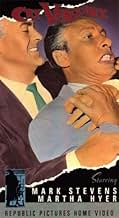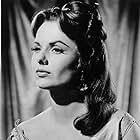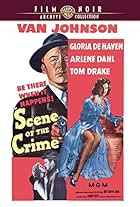Violent ex-cop Vic Barron comes to Ketchikan, Alaska seeking revenge on an old enemy.Violent ex-cop Vic Barron comes to Ketchikan, Alaska seeking revenge on an old enemy.Violent ex-cop Vic Barron comes to Ketchikan, Alaska seeking revenge on an old enemy.
Edward Clark
- Shop Owner
- (uncredited)
Richard Deacon
- 'Shiny' Sam - Bartender
- (uncredited)
Bert Stevens
- Bar Patron
- (uncredited)
- Director
- Writers
- All cast & crew
- Production, box office & more at IMDbPro
Storyline
Did you know
- TriviaThe Ketchikan airline depicted, Ellis Air, was an authentic Ketchikan company, founded by Bob Ellis in 1936. The aircraft shown in the movie is a Grumman G-21 Goose amphibious craft. If you look closely at the bottom of the plane you can see the wheels, which were used for ground landings. Ellis Air merged with Alaska Coastal Airlines in 1962, and this concern was itself taken over by Alaska Airlines in 1968.
- GoofsThough Mark Stevens' character is named Vic Barron, his pinky ring clearly has his real initials, "MS."
- ConnectionsReferenced in Real Time with Bill Maher: Quentin Tarantino/Max Brooks/Dan Carlin (2021)
Featured review
Cry Vengeance owes a debt to the previous year's Fritz Lang film The Big Heat. It too tells the tale of an honest cop whose family was killed in a mob-engineered explosion and who sets out as a crazed vigilante seeking redress. But while The Big Heat sizzles, Cry Vengeance stays tepid, perhaps owing to its sub-Arctic setting.
The star of earlier noirs The Dark Corner and The Street with No Name, Mark Stevens directs himself as the hate-twisted protagonist, just out of prison after being framed and losing his wife and daughter. (Stevens has aged visibly, and it's not just the scarred-face makeup his character sports.) Strong-arm tactics with plenty of karate chops elicit the information that the man he holds responsible has assumed a new identity in Ketchikam, Alaska. But not only is Steven's arrival expected, he's followed by a platinum-haired gunsel who's the real killer (Skip Homeier, who bears a resemblance to Lee Marvin, The Big Heat's sadistic torpedo).
Cry Vengeance matches its predecessor in brutality but comes up short everywhere else. Muddy photography wastes the scenic north, while the bland dialogue lacks the epigrammatic edge that's one of the joys of film noir (no "sisters under the mink" insinuation here as in Lang's film). The plot, with its double-crosses, needs a more baroque approach to sell itself.
On the whole, Cry Vengeance falls victim to the fatigue that, by 1954, was beginning to beset the entire noir cycle. Plots and characters amount, basically, to retreads. Joan Vohs, as Homeier's sozzled moll, couldn't have given this performance without Gloria Grahame's the year before in The Big Heat. With Stevens looking tired, too, it doesn't augur well for Cry Vengeance. But it holds distinction as the only film noir set in the Alaskan Territory, as Hell's Half Acre of the same year was the only one set in the Hawaiian (it wasn't until 1959 that statehood was conferred on both territories).
The star of earlier noirs The Dark Corner and The Street with No Name, Mark Stevens directs himself as the hate-twisted protagonist, just out of prison after being framed and losing his wife and daughter. (Stevens has aged visibly, and it's not just the scarred-face makeup his character sports.) Strong-arm tactics with plenty of karate chops elicit the information that the man he holds responsible has assumed a new identity in Ketchikam, Alaska. But not only is Steven's arrival expected, he's followed by a platinum-haired gunsel who's the real killer (Skip Homeier, who bears a resemblance to Lee Marvin, The Big Heat's sadistic torpedo).
Cry Vengeance matches its predecessor in brutality but comes up short everywhere else. Muddy photography wastes the scenic north, while the bland dialogue lacks the epigrammatic edge that's one of the joys of film noir (no "sisters under the mink" insinuation here as in Lang's film). The plot, with its double-crosses, needs a more baroque approach to sell itself.
On the whole, Cry Vengeance falls victim to the fatigue that, by 1954, was beginning to beset the entire noir cycle. Plots and characters amount, basically, to retreads. Joan Vohs, as Homeier's sozzled moll, couldn't have given this performance without Gloria Grahame's the year before in The Big Heat. With Stevens looking tired, too, it doesn't augur well for Cry Vengeance. But it holds distinction as the only film noir set in the Alaskan Territory, as Hell's Half Acre of the same year was the only one set in the Hawaiian (it wasn't until 1959 that statehood was conferred on both territories).
Details
- Runtime1 hour 22 minutes
- Color
- Aspect ratio
- 1.85 : 1
Contribute to this page
Suggest an edit or add missing content



































